Western development of anti-ship missiles. Part of 1
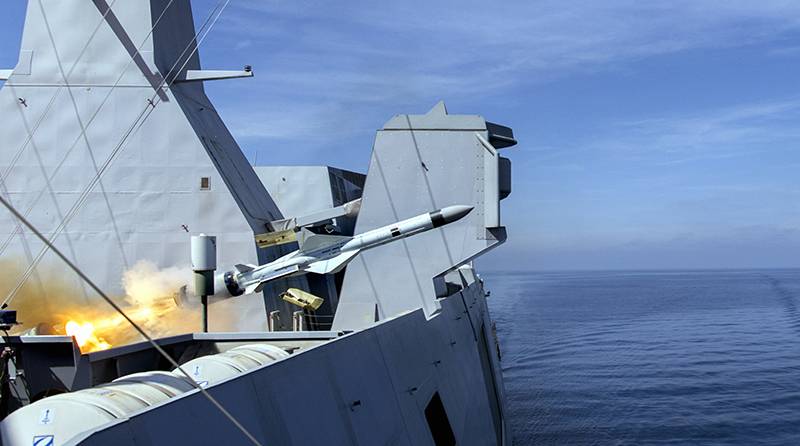
The newest version of the CRDA MBDA MM40 Block 3 has been sold and is in service with or is being supplied to 11 customers, including the French fleet. This weapon system is offered in versions for installation on ships, submarines, airplanes, helicopters and coastal complexes. MBDA is working to improve the missile guidance system so that it can cope with advanced enemy defenses.
The emergence of advanced anti-ship missiles and anti-ship cruise missiles, for example, new Chinese long-range supersonic missiles, and concerns about the ability of modern fleets to contain in light of the possibilities of prohibiting access / blocking of the zone stimulate the development of effective weapons systems and new generation systems.
Currently, programs are being implemented in the West to upgrade or create new anti-ship missiles (PKR), characterized by a large range, more advanced control and navigation, multi-mode homing heads, improved combat units and advanced attacking capabilities, redirection function in flight and an operator in the control loop in order to meet rapidly changing conditions. And all this so that they can perform the whole range of tasks and deal with the broadest set of goals, including objects located in the coastal zone or at a great distance.
Designed as a multiplatform rocket launched from ships, helicopters, fighters and coastal defense systems, the Marte Extended Range (ER) RCC was developed by MBDA Italia faster after the contract with Qatar concluded in September of 2016
European achievements
In March, 2017, the heads of the British and French defense ministries, signed a technical agreement to jointly explore options for the next generation of future anti-ship cruise missiles, FC / ASW (Future Cruise / Anti-Ship Weapons). At the concept development stage, for which the MBDA group is responsible, options for replacing and refining existing weapons of the Air Forces and Navy of both countries, including Storm Shadow / SCALP EG, AGM / UGM / RGM-84 Harpoon and Exocet MM40 missiles, will be checked and the missile projects will be defined and ways to reduce risks in order to develop solutions for the next phase of the program. The goal of the FC / ASW program is to obtain the planned combat capabilities that should be achieved by the end of the next decade. The three-year program of the United Kingdom and France will be equally funded; Before 2020 decided to start work, several variants of rocket concepts, subsystems and technologies will be developed and studied.
The UK has an urgent need to replace the Harpoon PKR and, therefore, in October last year, the British Secretary of Defense postponed the decision to write them off without a replacement, extending the service life of the missiles to more than 2018. France feels more relaxed with its arsenal of Exocet rockets, but at the same time both countries have recently decided to launch the Storm Shadow / SCALP EG missile modernization program. This form of cooperation, according to some experts and analysts, aimed at reducing costs, can expand to other countries and is the only way to maintain the long-term critical mass necessary for Europe to access key independent technologies.
In addition to the Norwegian, Polish and Malaysian fleets, the NSM rocket is one of the key elements of the German-Norwegian long-term cooperation in the naval sphere, officially launched in February 2018 of the year. In addition, the NSM RCC is at the heart of the joint offer of the Raytheon and Kongsberg companies to the promotion of this rocket on the American market.
MBDA family ship, air and submarine-based Exocet RCC family, which entered service in 1972, continues to receive orders from existing (at least 35 countries today) and potential buyers. Since the first deliveries to the French Office of Defense Procurement in December 2010, nearly 500 rockets in the latest version of the MM40 Block 3, including the French fleet, have been sold to eleven customers. In June 2016, MBDA received from Qatari fleet an important contract for various weapons systems, including the undisclosed number of Block 3. missiles. These missiles will go into service with the new Fincantieri corvettes and patrol missile boats and new coastal defense systems, which will also receive the new Matte ER weapon system. The mass of the rocket in the Block 3 variant is 780 kg, the body length with the starting engine is less than 6 meters, it is equipped with a powerful Microturbo TRI-40 turbojet engine, providing an increased range of about 200 km at extremely low altitudes. A missile with reduced infrared signatures and a small effective scattering surface is optimized for maneuvering in the final section of the trajectory with large overloads. The modern INS / GPS navigation kit allows you to program intermediate points in three coordinates, optimize the trajectory and conduct simultaneous attacks of several missiles. A missile in the Block 3 variant is equipped with a low-sensitivity high-explosive fragmentation warhead with a slow-blow fuse. Guidance at the final site is provided by a homing radar (GOS) with improved noise immunity with adaptive search and target selection modes, as well as advanced air defense breakthrough capabilities, while an attack on ground targets is carried out using GPS coordinates. Upgraded Exocet missiles do an excellent job with the latest enemy air defense systems. According to the French defense budget for 2018, an improved sub-option of Block 3c will be delivered in 2019. Details are not provided in the document, however, in the previous budget, the revision of the radar seeker was mentioned in terms of noise immunity, capture targets with low signatures and obsolescence.
In March, 2017, the company Saab Dynamics received a contract from the Swedish government to develop and manufacture the next-generation version of the RBS15 anti-ship missile for arming Swedish Visby-class corvettes of JAS Gripen E fighters
The NSM RCC (NyttSjomalsMissile - sea strike missile), developed by Kongsberg to meet the needs of the Norwegian fleet, is in search of new and potential customers in Europe and the USA. This high-precision low-profile anti-ship missile can operate at extremely low altitudes in the open sea and on the coastal strip and effectively break through the defenses of ships. In addition to the Norwegian and Polish fleets, which bought a missile for ship-based and mobile coastal defense systems, as well as a contract for the Malaysian Navy to equip six coastal warships, the NSM's long-term cooperation. The two countries intend to further develop and promote this rocket, while the German fleet plans to buy a large batch of NSM rockets. In addition, Raytheon and Kongsberg Defense Systems are promoting the NSM rocket into the US market and are participating in a QTH WS (over-the-horizon weapon system) over-the-horizon weapon system program that the US Navy will buy for missile patrol ships and coastal warships.
The Konsberg NSM family of missiles also includes a multi-task version of the air-based Joint Strike Missile (JSM) with a modified body for placement in the internal compartment and launching from the F-35 Lightning II fighter. The JSM RCC, developed with the participation of Australia, will be equipped with a second independent sensor of the passive radio frequency GOS developed by BAE Systems Australia and a two-way communication channel.
The NSM rocket weighing 407 kg with an unobtrusive composite hull with a length of 3,96 meters has an operating range in excess of 200 km. It is equipped with a modern passive guidance system, which includes a GPS-based multisensory navigation subsystem and an advanced dual-band thermal imaging GPS with an autonomous target recognition system in the final part of the trajectory. The NSM missile comes with ship-based inclined launch launchers, although the company also worked on options for vertical launch and launch from submarines. The NSM rocket, capable of attacking ground targets with high accuracy, is also available in a modified-body multi-purpose version of the JSM (Strike Missile) air-based with a modified hull to be placed inside the bomb compartment of the F-35 Lightning II fighter. The JSM rocket is being developed with the participation of Australia and will be equipped with a second independent sensor, a passive radio frequency GOS developed by BAE Systems Australia, and a two-way communication channel. Kongsberg intends to integrate the JSM into the F-35 fighter as part of the upgrade to the Block 4A / 4B version, which is to be put into service in the 2022-2024 year.
The RBS15 rockets in various variants, including the latest McNUMX jointly developed by Saab and Diehl Defense, are in service with the fleets of Croatia and Finland. Germany, Poland and Sweden. The Mk3 model was reportedly sold to Algeria to equip the new Meco 3AM frigates
In March 2017, Saab Dynamics received a contract from the Swedish Defense Procurement Authority for the development and production of a new version of the next-generation RBS15 anti-ship missile system to equip Swedish Visby-class corvettes and JAS Gripen E multirole fighters. In a new extended-range system that will be produced in airborne configurations and shipborne, combine the proven characteristics of the RBS15 family of missiles with new and improved capabilities. Reportedly, the new missile, similar in appearance to current RBS15 variants, will be a modified version of the existing RBS15 Mk3 anti-ship missile. In order to obtain all-weather capabilities and a significant increase in range due to weight reduction, the hull, navigation equipment, onboard processor and radar seeker will be modified. Weight reduction has been achieved through the widespread use of composite materials and other unnamed components. According to Saab, the new design of the next generation rocket will enable future upgrades. The new missiles, Rb3 + Mk15 for Visby corvettes and Rb 15F-ER (Extended Range) for Gripen E fighters, will be shipped in small batches and will take up combat duty starting in the mid-2020s. The contract for the joint production of Saab and Diehl Defense also provides for financing measures to extend the life of existing shipborne RBS15 Mk2 and aviation missiles RBS15F. The current version of the RBS15 Mk3, promoted by the two companies, is in production and is in service with the fleets of Germany, Poland and Sweden; it was reportedly sold to Algeria for the Algerian navy's new Meko 200AN frigates. The all-weather homing anti-ship missile RBS15 Mk3 with a flight weight of 660 kg and a length of 4,35 meters has a range of more than 250 km. The rocket, launched using the launch booster, is equipped with a high-resolution radar seeker with a built-in anti-jamming system. Guidance is carried out either over-the-horizon target designation, or along a varying trajectory with many intermediate points. A 200 kg high-explosive fragmentation warhead is initiated by the fuse either in remote mode or in a delayed shock.
The latest contract for the Exocet family of missiles, the company MBDA, received in June 2016 from the Qatar Navy for an unbroken amount to arm its new ships built by the Italian shipyard Fincantieri and the new coastal defense complexes MBDA. The European group is working to improve the missile guidance system to break through the enemy’s modern defense.
Designed as a multiplatform rocket launched from ships, helicopters, fighters and coastal defense systems, the Marte Extended Range (ER) rocket was developed by MBDA Italia faster after the contract with Qatar concluded in September of 2016. Marte ER is a medium-range anti-ship guided weapon system designed to work on targets in the open sea and in the coastal zone. It is equipped with a single ventral air intake and a Williams International turbojet engine, which makes it possible to achieve a range of “substantially more” 100 km, the rocket has a length of 3,6 meter and a diameter of 0,32 meter. The navigation and guidance kit allows you to perform improved avoidance maneuvers on the final part of the trajectory. When developing a mobile coastal defense system, equipment for the Marte Mk2 / N version of the ship is widely used, including the same launcher and launch control technology, while its work uses the network-centric command and control system developed by MBDA, which also includes a search and targeting drone . The development of the Marte ER marine / coastal rocket is proceeding according to a schedule with a date of adopting 2020 a year. At the same time, MBDA is working on an air-based version of the Marte ER, which was officially requested by Kuwait as the main anti-ship armament of the Eurofighter Typhoon fighter. The Leonardo Aviation Division and MBDA began a joint feasibility study to assess the possibility of integrating the rocket into the Typhoon platform.
The Marte ER program is in full swing, the date of entry into service is scheduled for 2020 year. The air-based version of the Marte ER family of missiles is proposed for the Eurofighter Typhoon platform as the main anti-ship armament. Opportunities Marte ER due to the requirements of the Italian Air Force and the export market, in particular the countries of the Persian Gulf
This phase of 18 months will be the first in a full-scale integration program agreed by the two companies. The capabilities of the Marte ER rocket are determined by the requirements of the Italian Air Force and foreign customers, in particular from the countries of the Persian Gulf, where, given regional instability, the Marte ER rocket can show its full potential in the fight against high-speed combat boats, corvettes and frigates, since it can be produced from one platform launch simultaneously six missiles to break through any advanced enemy defense. The option for a fighter differs from the helicopter, ship and ground options. They are all equipped with central folding wings, and the variant for the fighter is distinguished by fixed central wings and the absence of a starting engine. The new rocket has good potential for further improvement. MBDA is already working on the introduction of new technologies, including the guidance system, the homing head and the warhead.
Existing and promising technologies for Marte ER are expected to form the basis of a new generation anti-ship weapon system for the Italian fleet, which released new requirements for the development of a promising missile, which is scheduled to start in the 2018 year. This program, designated Otomat Mk2 Block IV / Teseo Mk2 / A and implemented by MBDA Italia, will allow Italy to retain critical competencies and technologies and more than 40-year experience in the development and production of anti-ship missiles.
Продолжение следует ...
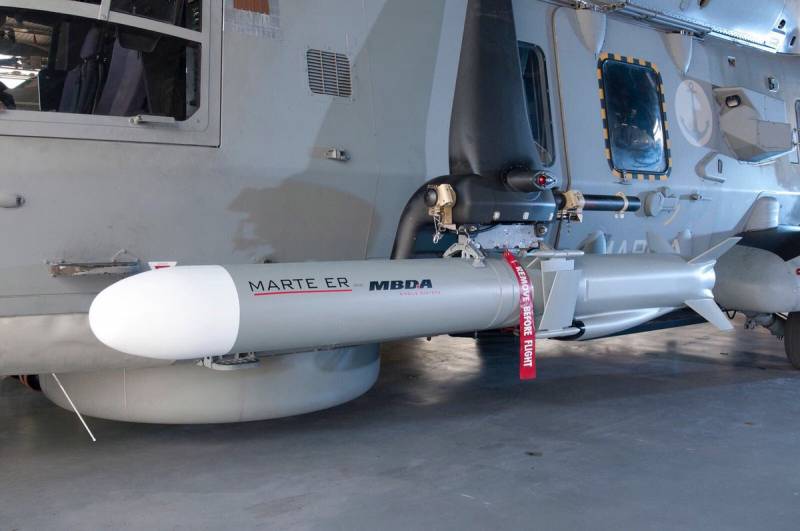
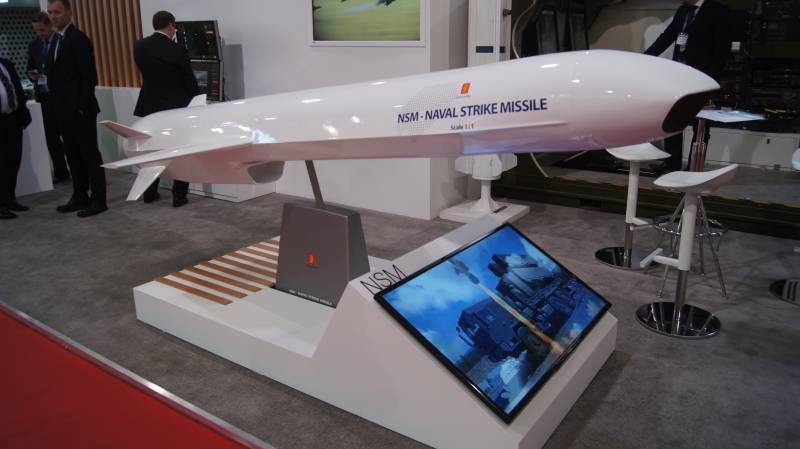
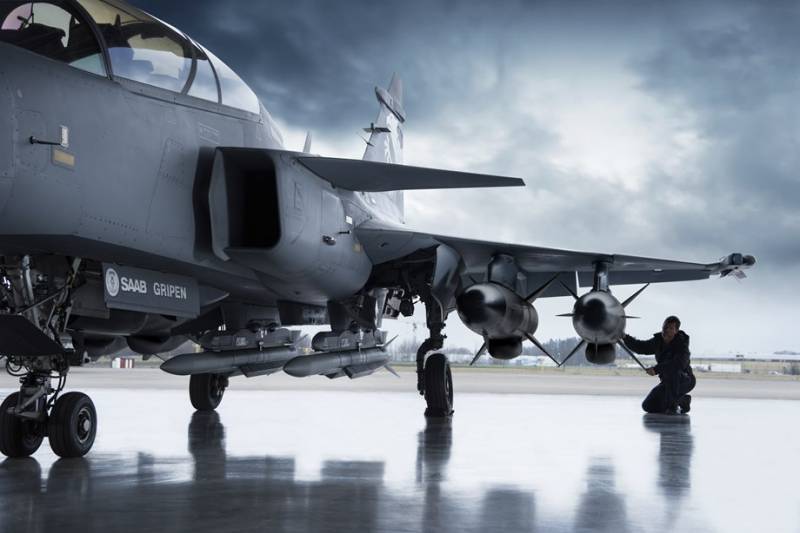
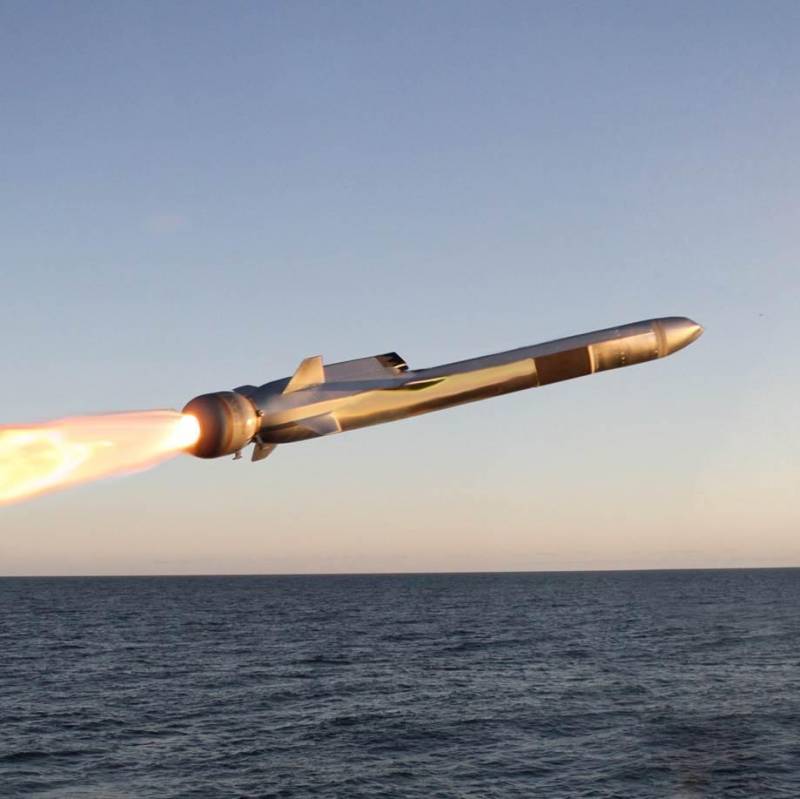
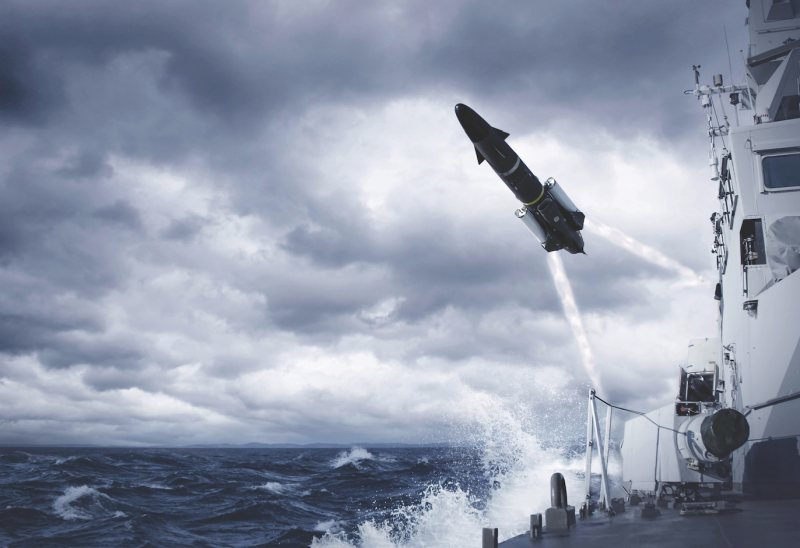
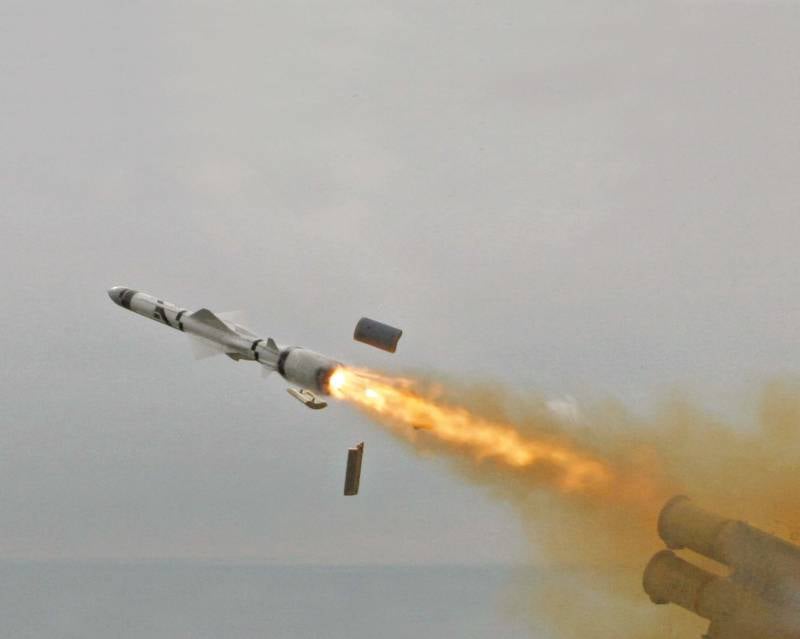
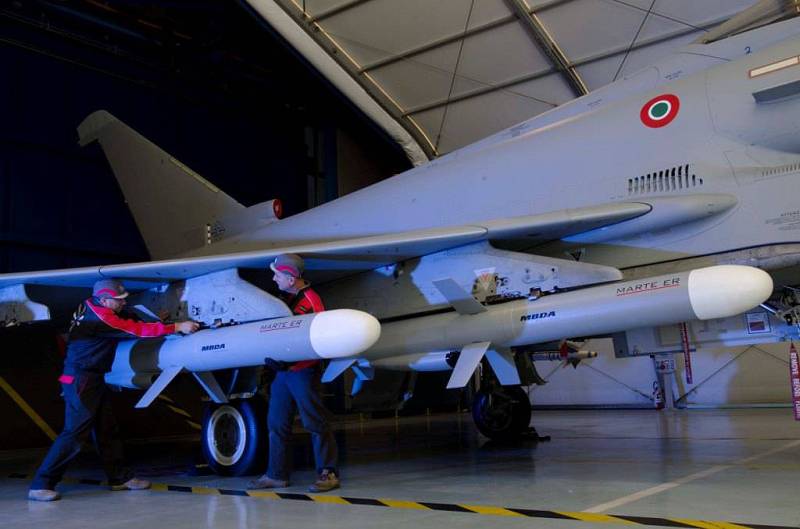
Information